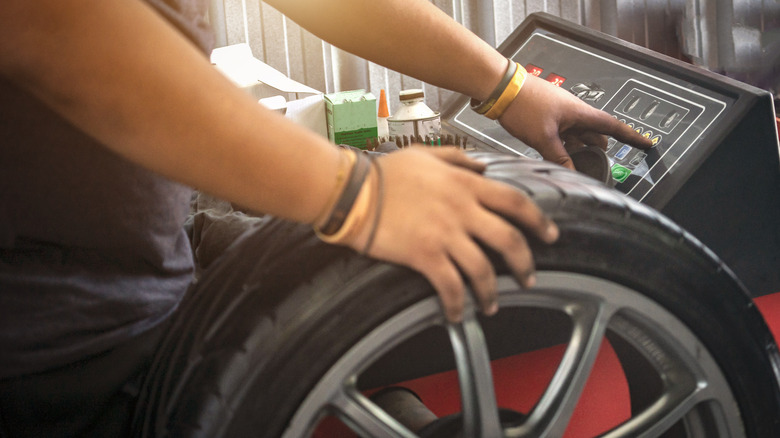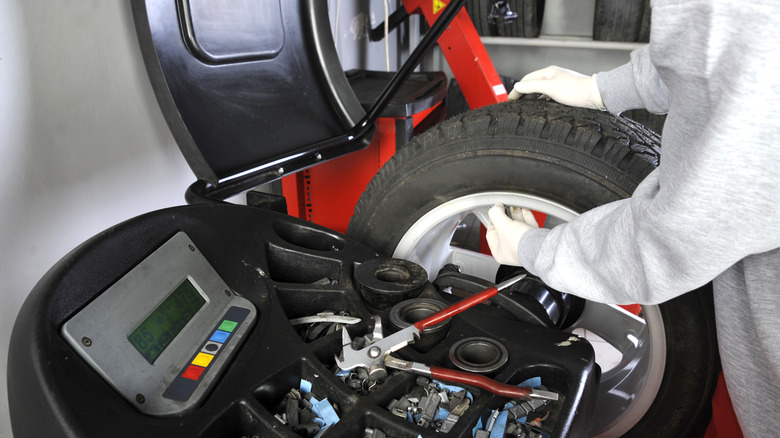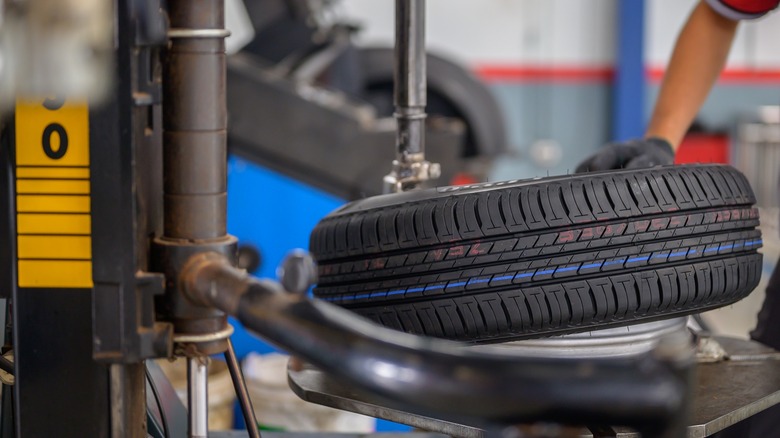What Does It Mean To Balance Tires & Do You Really Need To Do It?
We may receive a commission on purchases made from links.
Buying new tires is one thing, but having them mounted to your car's wheels is another matter. I make it a point to have the tires balanced when buying a new set of rubber or whenever the tires need to come off the wheels for whatever reason (vulcanizing, tire rotations, etc.). Wheel balancing (or tire balancing) is crucial to tire maintenance and helps improve ride comfort, tire wear, and handling.
When you hear mechanics or technicians say your wheels and tires need balancing, it means they need to remove the wheel assembly (with the tire installed) from the hub, place it in a machine that spins the tire, and install weights on certain parts inside the wheel to balance the tire. It all sounds good, but why? New tires are presumably fresh from the factory, so why is there a need to balance them after installing them on the rim?
Proper wheel balancing has many benefits
The reason why brand-new tires need balancing is that nothing is perfect. In this case, your tires (and wheels) may look perfectly round, but they're not. There are light and heavy points on each wheel and tire, and these minute imperfections will cause excess vibrations, excessive or uneven tire wear, steering issues, poor fuel economy, and premature damage to suspension components -– like the wheel bearings and shock absorbers -– if not addressed immediately.
Think of it this way: balancing the tire is like matching its manufacturing flaws to the wheel's imperfections. It's why new tires come with distinctive yellow and red dots on the sidewall. The yellow dot is the lightest point of the tire and should line up with the valve stem, which happens to be the heaviest point of the wheel. Meanwhile, the red dot is the lowest point of a tire and should line up with the wheel's highest point. The red dot is also a reference point when technicians balance the wheel.
If you've been around cars for a while, you probably know that branded tires cost a small fortune, and the prices increase depending on the wheel size or car type. While you can do things to make your car's tires last as many miles as possible, proper wheel balancing and maintaining a steady alignment will ensure longer and even tire wear while keeping the maintenance costs down.
Does my car need wheel and tire balancing?
Did you recently buy new tires and have them fitted? Did you recently deal with a puncture and had the offending wheel removed for repair? Are you experiencing vibrations in the front or rear while driving? Do your car tires have signs of uneven wear, even after an alignment? If you answered yes to any or all of the questions, you must have the wheels and tires checked for balancing. It only costs $100 to $200, and that's cheap insurance against uncomfortable vibrations, suspension damage, or premature tire wear. Moreover, balancing is typically free of charge when purchasing new tires, but you'll need to double-check with the tire dealer if the promo applies.
A more affordable option is to purchase a portable tire balancer and the necessary weights, but having the professionals do it is more convenient. Most wheel balancing services will include a complimentary inspection of the suspension and undercarriage, allowing you to address potential issues before they worsen.


